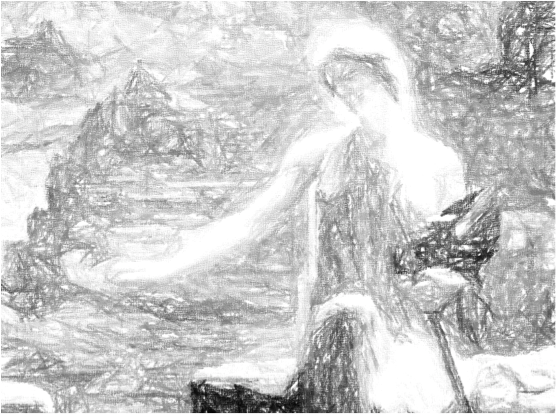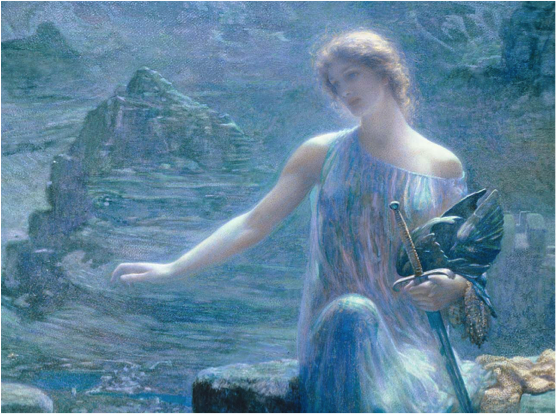Music Guide Valkyrie
Wagners Oevre holds many musical mysteries. The Valkyrie is no exception:
- How does the music show the fight against Wotan's regime?
- Is Wotan in erotic love with his own daughter?
- What message does the redemption motif contain?
The Valkyrie music guide provides answers. A short synopsis of each scene provides an immediate overview.
The leitmotifs and musical design of the work are clearly explained using musical examples.
The
audio samples make the explanations easy to understand.
Scope
- 56 pages
- 36 sheet music and audio examples, playable in the browser of your smartphone or PC
Reading sample
The third motif assigned to the Valkyries, the Valkyrie motif, is probably the best-known motif in this opera:
♫ Example 20: Derivation Valkyrie motif.
In the audio example, we first hear the becoming motif. Then the notes marked ① to ③ are struck again. Finally, the complete Valkyrie motif can be heard, extending beyond the note example.

The Valkyrie motif in its original form consists of broken triads and is related to the becoming motif. The Valkyries are creatures of nature. Like the sword motif (example 14), which is also related to the becoming motif, the Valkyrie motif contains a falling octave, which emphasizes the Valkyries’ closeness to nature.
In addition to the original form, which begins with a broken major chord, the motif appears in a sadder-sounding minor variant, especially in connection with Brünnhilde:
♫ Example 21: Valkyrie motif, major and minor variants

The two variants in major and minor reflect the state of mind of the Valkyries. In the preludes to Act 2 and Act 3, we hear almost exclusively the positive major variant, an expression of the Valkyries' joy in their genuine task. Brünnhilde is mostly accompanied by the minor variant.
After the opening of the curtain, we see Wotan and Brünnhilde on stage. Wotan gives Brünnhilde the task of helping Siegmund to victory in the battle against Hunding. Then Fricka appears and Brünnhilde retreats. (...)
Samples
To hear all the audio examples click on the image


- Storm motif
- Thunder motif
- Siegmund motif
- Siegmund and Sieglinde motif
- Derivation Sieglinde motif
- sibling’s love motif
- Wälsungs’ suffering motif
- Hunding motif
- Hunding's warning
- Contract motif
- Valhalla motif
- Woe fate motif
- Wälsungs’ motif
- Sword motif
- Love and Lent Song
- Renunciation motif
- Derivation love distress motif Valkyrie
- Hojotoho motif
- Ride motif
- Derivation Valkyrie motif
- Valkyrie motif, major and minor
- Anger motif
- Disgruntlement motif
- Despair motif
- Hate motif
- Rhinegold fanfare
- Fate motif
- Complete fate motif
- Siegfried motif
- Redemption motif
- Was my offence...
- Wälsungs’ love motif
- Derivation Slumber motif
- Farewell motif
- Sleep Motif
- Magic fire motif
 MusiCosa
MusiCosa
